ISOLUTION
-
-
Martinu – Sonata Nr.3 for Cello & Piano
Die 3. Violoncellosonate von Bohuslav Martinu(1890-1959), einem der fruchtbarsten und vielseitigsten Komponisten der tschechischen Musik in der 1. Hälfte des 20.Jahrhunderts,liegt in dieser Ausgabe in völlig neuer, überarbeiteter Gestalt vor.
Im Hinblick auf die Tatsache,dass die erste und bisher üblicherweise verwendete Druckausgabe der Sonate eine ganze Reihe von grundsätzlichen, oftmals willkürlichen Änderungen und Bearbeitungen enthält, für die es keine Anhaltspunkte in der Handschrift des Komponisten gibt, wurde diese in der vorliegenden modernen Urtextausgabe nicht berücksichtigt. Der Herausgeber Ales Brezina(seine Eingriffe in die Partitur sind im Notentext mit eckigen Klammern gekennzeichnet) kehrt hier konsequent zur Notation Martinus zurück, in der alle Nuancen des Vortrags dieses beliebten und auf der ganzen Welt häufig gespielten Werkes erfasst sind.
Poco Andante Moderato
Andante
Allegro Ma Non Presto€32,80€36,40Martinu – Sonata Nr.3 for Cello & Piano
€32,80€36,40Διαθέσιμο σε 1-3 ημέρες
-
Schubert – Sonata In A Minor Arpeggione for Viola & Piano
This volume is based on the Urtext of the New Schubert Edition; the solo part has been arranged for the performance on the viola while the piano part is identical to Schubert´s original as presented in the New Schubert Edition.€24,60€27,30Διαθέσιμο σε 1-3 ημέρες
-
PEACE DRP-1 Cymbal 18″ – 20″
High-Density PVC – Black finishing
For use with most popular Cymbals from 18″-20″ diameter€7,10€7,90PEACE DRP-1 Cymbal 18″ – 20″
€7,10€7,90Διαθέσιμο σε 1-3 ημέρες
-
PEACE DRP-1 Hi-Hat
High-Density PVC – Black finishing
For use with all 12″ most popular Hi-Hat Pairs€15,60€17,30PEACE DRP-1 Hi-Hat
€15,60€17,30Διαθέσιμο σε 1-3 ημέρες
-
Bornemann – Little Paganini For Violin and Piano
Year-long experience in teaching children violin gave the impulse to this unique collection of etudes. In these pieces, the wellknown violin teacher Christiane Bornemann makes use of tonepainting with titles such as “The Snake”, “Clowns” and “Dance of the Dwarfs”.The parts of both instruments are kept at an easy level of difficulty.
Pages: 24 Book & 4 Parts
Language: English / German
Publisher: Barenreiter€10,70€11,90Bornemann – Little Paganini For Violin and Piano
€10,70€11,90Διαθέσιμο σε 1-3 ημέρες
-
Mozart – Violin Concerto Nr.1 In Bb Major
Mozart, Wolfgang Amadeus – Concert Nr.1 In Bb Major
For Violin and Piano
Suggestions for performance by Igor Ozim
Duration: 23 min.
Piano Reduction: Lilia Vásquez
Score Pages: 32
Violin Part Pages: 11
Language: German, English
Publisher: Barenreiter€9,80€10,90Mozart – Violin Concerto Nr.1 In Bb Major
€9,80€10,90Διαθέσιμο σε 1-3 ημέρες
-
Jan Kubelik – Burlesque
The Burleska (Burlesque) by Jan Kubelik (1880-1940), a virtuoso and composer who made Czech violin art famous all over the world and was called a new Paganini, was written in 1928.Like most of Kubelik’s works for violin and piano, it is distinguished by perfect instrumental stylisation and requires considerable technical brilliance on the part of performers.
Pages: 24
Language: Czech
Publisher: Editio Barenreiter Praha€15,40€17,10Jan Kubelik – Burlesque
€15,40€17,10Διαθέσιμο σε 1-3 ημέρες
-
Pohl – Das Klarinettenspiel, Band 2
This clarinet method is primarily aimed at children. However, due to the systematic structure and methodology, it is equally suitable for adults. A large number of one- to three-part pieces enable use in both individual and group lessons.
Folk songs and well-known classical melodies (including clarinet solos from orchestral works) are complemented with jazzy, rocky and other original compositions by the author to create a stylistically diverse educational work. In between there are always suggestions for improvisation. Both the German and the French system were taken into account for the fingerings.
In the 2nd volume, the entire tonal range up to c“` is opened up, including all semitones. The scores extend to sixteenths, eighth-note triplets and double dotting. In order to familiarize the students with the possibilities of musical expression, there are a large number of character pieces that appeal to the students’ imagination and world of experience. In addition, the most important musical phenomena are introduced in a practical way according to the principle “first experience – then explain”.
Content
Vorwort
Schwingendes Pendel
Triole
Amazing Grace
Eine Autofahrt
Altfranzösisches Lied (Tschaikowsky)
Unos quieren con alma
Fröhliches Springen
Wer spielt die meisten Töne mit einem Griff
Schaukeln
Abendstille überall
Dur-Tonleiter / C-dur
Moll-Tonleiter / a-moll
Dur-Dreiklang / Moll-Dreiklang
Alle Vögel sind schon da (C-dur)
Accelereando / Ritardando
Eisenbahnfahrt
Schwere Last
Portato
Tenuto
Sanftes Berühren
An die Freude (Beethoven)
D-dur
D-Dance
Treppentanz
Dreh dich
Wilder Tanz
Auf dem See
Irische Volksweise
d-moll
Einsamkeit
Go down, Moses
Harmonisches Moll / Leitton
Melodisches Moll
Linien in melodisch Moll
Rolle über cis’
Dorisch
Scarborough Fair
Wie erkennt man eine Tonart
Dynamische Zeichen (Lautstärkebezeichnungen)
Sonniger Tag
Bolero (Ravel)
Fünfertanz
Hard To Bear
Artikulationsarten
Rhythmischer Spaß
Arie aus der Oper “La Traviata” (Verdi)
Fanfare
Trost
Soft Rock
A-dur / a-moll harmonisch und melodisch
Lauf im Regen
Doppelt punktierte Note
Geradeaus
Genau
Allein
Tanz im Freien
Am nächsten Morgen
Da capo al #
Tanz auf dem Dorffest
Thema aus Tschaikowskis 6. Sinfonie
B-dur
Soothing
Enharmonische Verwechselung
Fließen
Deutscher Tanz (Schubert)
Thema und Variationen
7-Blues
Aus einer anderen Zeit
Lydisch
L’isle joyeuse (Debussy)
Auf der Höhe
Von fremden Ländern und Menschen (Schumann)
Grifftabelle (Deutsches System)
Grifftabelle (Französisches System)
Pages: 64
Language: German
Publisher: Barenreiter€15,40€17,10Pohl – Das Klarinettenspiel, Band 2
€15,40€17,10Διαθέσιμο σε 1-3 ημέρες
-
Pohl – Das Klarinettenspiel, Band 3
The volume is intended both as a performance book and as part 3 of the clarinet method. In it, the tonal space of the high register (cis ,,, to c ,,,, ) is developed. When designing the entire school work, special emphasis was placed on the development of rhythmic skills right from the start. This is continued in Volume 3.
In addition, all important musical terms including intervals and scales are explained. Solo pieces and duets alternate with pieces for one or two clarinets with piano accompaniment or with chord symbols for the guitar. Classical pieces (almost exclusively) with original clarinet parts complement each other with jazzy or stylistically varied compositions by the author to create a challenging performance book for advanced students.
Content
Vorwort
Vorschlagnote
Melancholie
Sekunde
Kegelduett (Mozart)
Terz
Tiefer Süden
Triller
Invention
Menuett (Bizet)
Quarte- Ferien
Zweiunddreißigstelnote
Erwachen am Moregn
Die Hebriden (Mendelssohn Bartholdy)
Szene am Bach (Beethoven)
Taktwechsel
Neuer Zwiefacher
Quinte
Stimmungswechsel
Blues-Schema
Blues-Improvisation
Unter Palmen
Doppelkreuz, Doppel-Be
Allegro con grazia (Tschaikowski)
Vierteltriole
3-4-4-2-Blues
Praller, Mordent,Doppelschlag
Ein altes Märchen
Phrygisch
Stille Trauer
Thema (Weber)
Dämmerung in Kingston
Sahara
Quintole
Allegretto(Brahms)
Mixolydisch
Auf dem Balkan
Swing
Slow Blues
Rock and Swing
Duole
Sexte
Chanson
Vorspiel aus “Göttersdämmerung” (Wagner)
Glissando
Sherele
Chromatische Tonleiter
Ganztonleiter
Ungarische Rhapsodie Nr. 2 (Liszt)
Septole
Bossa
Tritonus
Septime
Zum Gipfel
Grifftabellen: Deutsches und Französisches System
Pages: 88
Language: German
Publisher: Barenreiter€15,40€17,10Pohl – Das Klarinettenspiel, Band 3
€15,40€17,10Διαθέσιμο σε 1-3 ημέρες
-
Mozart – Violin Concerto Nr.2 In D Major
Mozart, Wolfgang Amadeus – Concert Nr.2 In D Major
For Violin and Piano
Suggestions for performance by Igor Ozim
Duration: 21 min.
Piano Reduction: Lilia Vásquez
Score Pages: 22
Violin Part Pages: 8
Language: German, English
Publisher: Barenreiter€9,80€10,90Mozart – Violin Concerto Nr.2 In D Major
€9,80€10,90Διαθέσιμο σε 1-3 ημέρες
-
Mozart – Concerto Nr.2 In D Major KV 211
Mozart, Wolfgang Amadeus – Concert Nr.2 In D Major
For Violin and Piano
The Authoritative Performing Edition
– New easy to play keyboard reduction
– Violin part with the Urtext of the New Mozart Edition
– Additional violin part with fingerings, bowings and performance comments
– Additional brochure with cadenzas and transitions
Editor: Mahling, Christoph-Hellmut
Piano Reduction: Schelhaas, Martin
Fingering, Bowing and comments on performance: Wulfhorst, Martin
Score Pages: 32
Unmarked Violin Part Pages: 9
Marked Violin Part Pages: 9
Cadenzas and “Eingänge” Pages: 7
Language: German, English
Publisher: Barenreiter€15,90€17,60Mozart – Concerto Nr.2 In D Major KV 211
€15,90€17,60Διαθέσιμο σε 1-3 ημέρες
-
Mendelssohn – Concerto in E Minor Op.64
Mendelssohn Bartholdy, Felix
Concerto for Violin and Orchestra in E minor Op.64
Late version 1845
– First ever Urtext edition of both versions of op. 64
– Critical Commentary (Engl.) included with full score
– Informative preface (Engl. / Ger.)
– Piano reductions each with an Urtext violin part and a second violin part prepared with fingerings and bowings.
In 1838 Felix Mendelssohn wrote to the violin virtuoso Ferdinand David informing him that he was working on a violin concerto “… the opening theme, one in E minor runs through my head and it gives me no peace”; the concerto in the state described by Mendelssohn to David was never published in a performing edition – it was only rediscovered in 1988.
One would think that such an important work would be adequately represented in modern editions true to the sources. Alas not even the score used today represents the orchestral parts Mendelssohn saw to print in 1845, but one heavily edited in the 1860s by Julius Rietz for the Mendelssohn Complete Edition.
For the Bärenreiter Urtext edition, the Mendelssohn specialist R. Larry Todd has edited both the original version of the concerto as well as the later version known today.
The first version of the concerto calls for the soloist to perform the orchestral tuttis , contains a shorter cadenza by Mendelssohn, many solo violin pitches in different octaves, passages with different orchestral scoring and many many surprises regarding articulation and dynamics.
The later version goes back to the first edition orchestral parts published in 1845 and the piano reduction sanctioned by Mendelssohn.
Todd makes use of all known sources including the letters between Mendelssohn and David as well as Mendelssohn and the original publishers where general schemes as well as specifics of articulation were exchanged.
This first ever Urtext edition of one of the most popular violin concertos in the repertoire finally gives performers the opportunity of playing just what Mendelssohn wrote.
The Bärenreiter Urtext edition offers the two versions of op. 64 back to back in score and parts together with facsimiles, an informative preface describing the genesis of the composition and a detailed critical commentary.
Editor: Todd, R. Larry
Score Pages: 45
Violin Part Pages: 16×2
Language: English, German
Publisher: Bärenreiter€22,50€25,00Mendelssohn – Concerto in E Minor Op.64
€22,50€25,00Διαθέσιμο σε 1-3 ημέρες
-
Martinu – Concerto for 2 Violins And Orchestra
Martinů, Bohuslav Jan – Concerto
for 2 Violins and Orchestra
(Piano Reduction)
Editor: Šolc, Karel
Score Pages: 61
Violin Part Pages: 16 x 2
Language: English, German, Czech
Publisher: Bärenreiter€32,90€36,60Martinu – Concerto for 2 Violins And Orchestra
€32,90€36,60Διαθέσιμο σε 1-3 ημέρες
-
Bach – Six Suites For Cello Solo BWV 1007-1012 German
A unique edition – all readings at a glanceThis new edition, in contrast to the array of Bach Cello Suite publications available today, has made use of all the five sources which have come down to us. The basis for this edition is the most reliable of the sources, the manuscript copy in the hand of Anna Magdalena Bach. All variant readings from the four other sources are clearly laid out for performance. Cellists now have the possibility of rendering performances based on just one of the five sources as well as the option of combining the sources in a mixed version.
Content:
Composer / Author: Bach, Johann Sebastian
Suite I BWV 1007
Instrumentation: Cello
Composer / Author: Bach, Johann Sebastian
Suite II BWV 1008
Instrumentation: Cello
Composer / Author: Bach, Johann Sebastian
Suite III BWV 1009
Instrumentation: Cello
Composer / Author: Bach, Johann Sebastian
Suite IV BWV 1010
Instrumentation: Cello
Composer / Author: Bach, Johann Sebastian
Suite V BWV 1011
Instrumentation: Cello
Composer / Author: Bach, Johann Sebastian
Suite VI BWV 1012
Instrumentation: Cello
Composer / Author: Bach, Johann Sebastian
Appendix: Suite V in Standard Tuning BWV 1011
Instrumentation: Violoncello€59,00€63,00Διαθέσιμο σε 1-3 ημέρες
-
Mendelssohn – Concerto In E Minor Op.64 1844-1845
Mendelssohn Bartholdy, Felix
Concerto for Violin and Orchestra in E minor Op.64
Early version 1844 and late version 1845
Set of Two Books ( Piano Reduction & Violin Part)
In 1838 Felix Mendelssohn wrote to the violin virtuoso Ferdinand David informing him that he was working on a violin concerto “… the opening theme, one in E minor runs through my head and it gives me no peace”; the concerto in the state described by Mendelssohn to David was never published in a performing edition – it was only rediscovered in 1988.
One would think that such an important work would be adequately represented in modern editions true to the sources. Alas not even the score used today represents the orchestral parts Mendelssohn saw to print in 1845, but one heavily edited in the 1860s by Julius Rietz for the Mendelssohn Complete Edition.
For the Bärenreiter Urtext edition, the Mendelssohn specialist R. Larry Todd has edited both the original version of the concerto as well as the later version known today.
The first version of the concerto calls for the soloist to perform the orchestral tuttis , contains a shorter cadenza by Mendelssohn, many solo violin pitches in different octaves, passages with different orchestral scoring and many many surprises regarding articulation and dynamics.
The later version goes back to the first edition orchestral parts published in 1845 and the piano reduction sanctioned by Mendelssohn.
Todd makes use of all known sources including the letters between Mendelssohn and David as well as Mendelssohn and the original publishers where general schemes as well as specifics of articulation were exchanged.
This first ever Urtext edition of one of the most popular violin concertos in the repertoire finally gives performers the opportunity of playing just what Mendelssohn wrote.
Editor: Todd, R. Larry
Violin PerformancePart: Wulfhorst, Martin
Score Pages: 89
Violin Part Pages: 32×2
Language: English, German
Publisher: Bärenreiter€42,30€47,00Mendelssohn – Concerto In E Minor Op.64 1844-1845
€42,30€47,00Διαθέσιμο σε 1-3 ημέρες
-
Electro Harmonix Germanium 4 Big Muff Pi Πετάλι
Συνδυάζοντας 4 κλασσικά τρανζίστορ γερμανίου. το ehx germanium 4 big muff pi είναι το αποτέλεσμα ενός μοντέρνου σχεδιασμού με την τεράστια αναλογική κληρονομιά της ehx. Ανεξάρτητα overdrive και distortion. το καθένα με 2 τρανζίστορ και ξεχωριστά ποτενσιόμετρα ρύθμισης. Η δυνατότητα χρήσης και των 2 παραμορφώσεων ταυτόχρονα. παρέχει την ισχύ ενός κυκλώματος με 4 τρανζίστορ με απόλυτη ευελιξία στον έλεγχο.• Ανεξάρτητο overdrive και distortion με δυνατότητα stacking• 4 κλασσικά τρανζίστορ γερμανίου• Κάθε παραμόρφωση χρησιμοποιεί από 2 τρανζίστορ • Και οι 2 παραμορφώσεις μαζί δημιουργούν κύκλωμα 4 τρανζίστορ• Ποτενσιόμετρα bias και tone στο overdrive κανάλι: ρυθμίζουν το ηχόχρωμα του overdrive• Ποτενσιόμετρα volts και bias στο distorion κανάλι: καθορίζουν τον τρόπο που θα αντιδράσει το distortion• Το ποτενσιόμετρο volts προσδίδει ιδιαίτερο χαρακτήρα στο πετάλι καθώς ρυθμίζει την ποσότητα της τάσης που παρέχεται στο κανάλι • Περιλαμβάνεται 9v μπαταρία (τροφοδοτικό 9.6vdc-200ma δεν περιλαμβάνεται)€122,00€139,00Electro Harmonix Germanium 4 Big Muff Pi Πετάλι
€122,00€139,00Διαθέσιμο σε 1-3 ημέρες
-
Electro Harmonix Nano Metal Muff με Noise Gate Πετάλι
Νέα σχεδίαση του metal muff με noise gate για την εξάλειψη του ανεπιθύμητου θορύβου όταν σταματάτε να παίζετε και με ξεχωριστό led για να υποδεικνύει πότε το gate είναι ενεργό. Ένα συμπαγές πετάλι με έξυπνες. απλές ρυθμίσεις για pure metal ήχο!• Σχεδιασμένο για τον metal κιθαρίστα• compact σχεδίαση• Ποτενσιόμετρα eq control: bass +/- 14db of cut or boost. mid +/- 15db και treble +/- 10db• vol (volume) για τον έλεγχο της συνολικής έντασης• dist για τον έλεγχο gain και distortion• Λειτουργία noise gate με υπόδειξη led • Συμπεριλαμβάνεται 9v μπαταρία€85,00€95,00Διαθέσιμο σε περισσότερο από 30 ημέρες
-
Janacek – String Quartet N.2, “Intimate Letters”
Janáček, Leoš – String Quartet Nr.2 “Intimate Letters”
– Urtext based on the “Critical Complete Edition of the Works of Leos Janácek”
– With a foreword by Milos Stedron (Cz/Eng/Ger)
– Autograph sketches used as the primary source
Janácek’s 2nd String Quartet, “Intimate Letters”, is regarded as a highlight of the modern string quartet literature. It was written during the composer’s last year of life, between 29 January and 19 February 1928, inspired by the ageing Janácek’s exceptional love for Kamila Stösslová. The Moravian Quartet devoted themselves to this impressive work; Janácek attended a total of three of their rehearsals in May and June 1928. This had several consequences, including his abandoning his original idea of using a viola d’amore.
After Janácek’s unexpected death (12 August 1928) the uncertain genesis of the work became the greatest problem of the “Intimate Letters”: the surviving copies were not definitively authorised.
The editors of this new edition have reverted to Janácek’s autograph sketches as the main, most reliable source and using these as a basis, have reconstructed the work as it stood at the point of Janácek’s death. The musical text, taken from the “Critical Complete Edition of the Works of Leos Janácek” (Vol. E/4), therefore contains clear differences in comparison with older editions.
Editor: Faltus, Leoš / Štedron, Miloš
Instrumentation: Violin (2), Viola, Violoncello
Language: English, Czech, German
Publisher: Bärenreiter
€22,50€25,00Janacek – String Quartet N.2, “Intimate Letters”
€22,50€25,00Διαθέσιμο σε 1-3 ημέρες
-
Debussy – Suite bergamasque
State-of-the-Art Bärenreiter quality Urtext
Performer information on Aesthetics i.e. pedalling, tempo, articulation, dynamics
Critical report (Eng.) and Facsimile
Claude Debussy’s Suite bergamasque was first published in 1905 by the French publisher Fromont, but the suite’s origins go back to the early 1890s when it was first under contract with the publisher Choudens. By the time of the suite’s publication, nearly 15 years had transpired and the originally three-movement suite had evolved into one with four movements with different titles and the work was issued by a publisher with whom Debussy had complex relations.
The extant 1st proofs to the first edition, corrected by Debussy, clearly show his excision of dozens of bars and reveal numerous textural alterations. In 1909 at the earliest, Fromont re-engraved the suite and added many accidentals – in particular in the Passepied – thus altering the harmony. This later engraving has been the basis for all modern editions although no justification for the re-engraving or the resulting modifications can be traced back to Debussy.
Regina Back’s Urtext edition clearly lays out the development of the suite, documents the various reprints and the changes to them, and offers unique insights into the title of the suite and the individual movements.
Bärenreiter’s new edition is based on the first edition corrected by Debussy – with its original harmony – and offers the later alterations as the small print in the volume.
Einführung
Introduction
Introduction
Faksimiles / Facsimiles / Facsimiles
Critical Commentary€10,50€11,50Debussy – Suite bergamasque
€10,50€11,50Διαθέσιμο σε 1-3 ημέρες
-
Debussy – Deux Arabesques
Close on the heels of Regina Back’s critical edition of Debussy’s Children’s Corner come the equally popular Deux Arabesques in the definitive Urtext performing edition.
These two jewels of the piano literature were first published in 1891 and made available at the time in a relatively small print run of 300 copies. In 1903 the French publisher Durand attempting to capitalize on Debussy’s quickly growing fame published the Arabesque No.1 in an advertisement in Le Figaro and between 1904 and the new engraving with corrections and revisions in 1912 more than 50,000 copies were sold!
Bärenreiter’s new Urtext edition while drawing on all known sources, documents the geneses of the compositions until 1912 and the new edition is based on this corrected 1912 re-engraving.
State-of-the-Art Bärenreiter quality Urtext
Performer information on Aesthetics i.e. pedalling, tempo, articulation, dynamics
Critical report ( Eng. ) and Facsimile…
Einführung
Historisches
Der Begriff “Arabeske”
Ästhetik und Aufführungspraxis
Zur Edition
Die Quellen
Faksimile
Critical Commentary€7,00€7,80Debussy – Deux Arabesques
€7,00€7,80Διαθέσιμο σε 1-3 ημέρες
-
Mendelssohn – 6 Kinderstucke Op.72& 7 Charakterstk Op.7
Seven Character Pieces op. 7 / Six Children’s Pieces op. 72
Two of Mendelssohn’s famous piano albums, with pieces of easy to medium level of difficulty
Urtext edition reflecting the latest research findings
Different versions are taken into consideration
Critical Commentary and detailed foreword (Ger/Eng)
The “ Charakterstücke op. 7” and “ Kinderstücke op. 72” are Mendelssohn’s most popular piano albums besides his “Lieder ohne Worte ” and the “Variations sérieuses op. 54”. Robert Schumann described the character pieces as an “interesting contribution to the development” of the “masterful youth”.
The compositions mostly dating from 1827, are essentially the result of his lessons with Carl Friedrich Zelter in Berlin. The teacher encouraged his pupil to immerse himself in the strict style of old music”, in particular Johann Sebastian Bach, but at the same time, as he himself said, confidently allowed Mendelssohn to dream of “dragons and goblins”.
In the 19th century, learning the piano was regarded as a highly desirable accomplishment. The demand for piano lessons for children led rapidly to the development of a repertoire suitable for this age-group. Albums for children were particularly popular around the mid-19th century and were popular presents for children’s birthdays, Christmas and other occasions.
Mendelssohn’s “ Kinderstücke op. 72” were published in London in 1847, the year of his death, under the title “Christmas Present for His Young Friends”.
The edition contains both piano cycles in the versions published in the first edition, and an extensive appendix also includes variants and early versions which survive in different autograph manuscripts
Content
Vorwort / Preface
Sieben Charakterstücke Opus 7 (Fassung des Erstdrucks / Version from the First Edition):
Sanft und mit Empfindung
Mit heftiger Bewegung
Kräftig und feurig
Schnell und beweglich
Ernst und mit steigender Lebhaftigkeit
Sehnsüchtig
Leicht und luftig
Sechs Kinderstücke Opus 72 (Fassung des Erstdrucks / Version from the First Edition):
Allegro non troppo
Andante sostenuto
Allegretto
Andante con moto
Allegro assai
Vivace
Anhang / Appendix:
I. Autographe Fassungen der Charakterstücke Opus 7 Nr. 1, 2 und 4 / Autograph Versions of the Charakterstücke Opus 7 nos. 1, 2 and 4:
Andante
Allegro vivace
Con moto
II. Stücke aus den Notenalben für Eduard und Lilli Benecke (1842) / Pieces from the Albums for Eduard and Lilli Benecke (1842):
1. Aus dem Notenalbum für Eduard Benecke / From the Album for Eduard Benecke:
Allegretto (op. 72 Nr. 3, Frühfassung / Early Version)
Andante
Allegro assai (op. 72 Nr. 5, Frühfassung / Early Version)
Sostenuto [Erstausgabe / First Edition]
2. Aus dem Notenalbum für Lilli Benecke / From the Album for Lilli Benecke:
Allegretto (op. 72 Nr. 6, Frühfassung / Early Version)
Andante con moto (op. 72 Nr. 4, Frühfassung / Early Version)
Andante sostenuto (op. 72 Nr. 2, Frühfassung / Early Version)
Con moto (op. 72 Nr. 1, Frühfassung / Early Version)
Critical Commentary€23,50€26,10Διαθέσιμο σε 1-3 ημέρες
-
Debussy – Pour Le Piano
State-of-the-Art Bärenreiter quality Urtext
Performer information on Aesthetics i.e. pedalling, tempo, articulation, dynamics
Critical report (Eng.) and Facsimile
Little is known about the origins of Debussy’s Pour le piano, only that the second movement Sarabande was written in 1894 and that the autograph carries the clear inscription »1901«.
As with the Suite bergamasque, Pour le piano was published first by Fromont in 1901, although Debussy did not grant him the full rights to the composition until 1905. This delay had most certainly to do with Debussy’s efforts to have Fromont transfer the rights to Pelléas et Mélisande to his new exclusive publisher Durand; in other words, Fromont was to own Pour le piano only if Durand owned Pelléas.
Bärenreiter’s new critical scholarly edition edited by Regina Back relies on all known sources, documenting the genesis of the composition, provides a detailed Critical Commentary and enlightens with its text passages on performance practice and Debussy’s piano music.
Einführung:
Entstehungs- und Pubikationsgeschichte
Zum Werk
Ästhetik und Aufführungspraxis
Zur Edition
Die Quellen
Übersetzung der Spielanweisungen
Introduction:
Genesis and Publicatin History
The Work
Aesthetics and Performance Practice
Notes on the Edition
The Sources
Translation of Performance Instructions
Introduction:
Genèse et historique de la publication
L’Œuvre
Esthétique et traditions d’exécution
Notes sur l’edition
Sources
Faksimile / Facsimile / Facsimile
Anhang / Appendix / Appendice
Critical Commentary€8,40€9,30Debussy – Pour Le Piano
€8,40€9,30Διαθέσιμο σε 1-3 ημέρες
-
Rossini – The Barber of Siviglia
With the arrangements for the woodwind quintet begins a series of arrangements for instrumentation which, due to the variety of sounds and possible variations of its five different instruments, seems predestined to make works of this type accessible to chamber music as well.This series follows in the tradition of countless contemporary arrangements, such as the Harmoniemusic, created in part by the composers themselves, only now for a scoring brought to life by Czech-born French composer Anton Reicha in the early 19th century and only achieved its current level of virtuosity with the invention of the valve horn.€18,00Διαθέσιμο σε 1-3 ημέρες




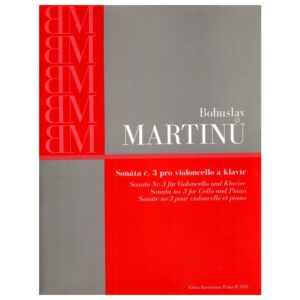
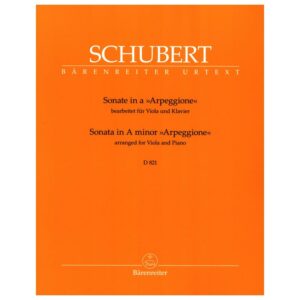
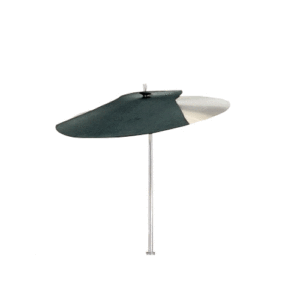



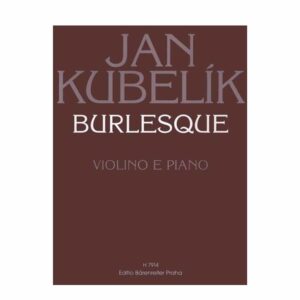
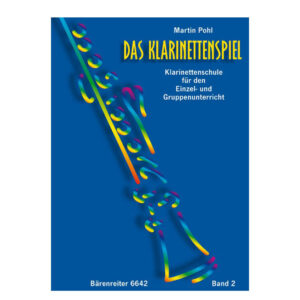


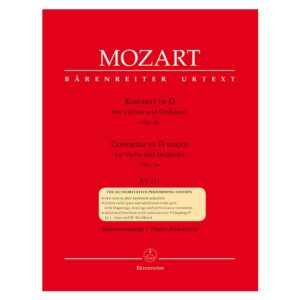
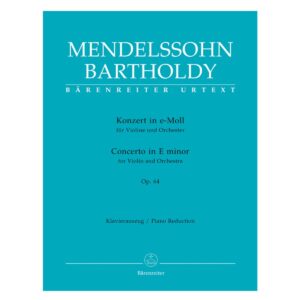











Heft ll bietet einen hervorragenden Einblick in die Schaffensperiode der Komponistin und rundet mit den Klavierstücken aus den Jahren 1838-1856 das Bild der außergewöhnlichen Künstlerpersönlichkeit Clara Schumanns ab, die bereits vor ihrer Hochzeit mit dem damals noch kaum bekannten Robert Schumann Rang und Namen besaß. Musikalisches Gespür sowie ausgefeilte Kompositionstechnik zeichnen Clara Schumanns Werke aus, die sie zugleich als eine der bedeutendsten Komponistinnen ihrer Zeit ausweisen.
Romance variée op. 3
Romance op. 5/3
Trois Romances op. 11
Scherzo II op. 14
Quatre pièces fugitives op. 15
Romanze a-Moll 21/1
Romanze h-Moll